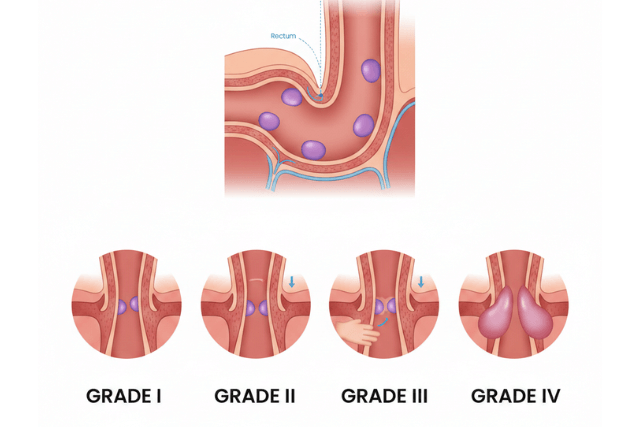Finding a painful Lump on Your Tailbone naturally triggers immediate concern and often causes significant anxiety quickly. Many people immediately assume this unwelcome swelling represents a simple, easily resolved Ingrown Hair problem easily. However, the lump in the sacrococcygeal area could potentially be a much more complex condition, requiring expert medical care urgently. Specifically, you must correctly differentiate between a common superficial skin irritation and a deeper, chronic Pilonidal Cyst effectively. Therefore, recognizing the subtle but highly important differences in symptoms remains the vital first step toward securing proper Safe Treatment immediately. Never rely on self-diagnosis when dealing with persistent pain or any significant, unusual drainage constantly.
Pilonidal Cyst: Recognizing the True Warning Signs
A Pilonidal Cyst is a truly chronic skin infection that forms near the top of the crease between the buttocks consistently. This condition frequently begins with hair, skin debris, and dirt getting trapped inside a tiny opening or pit in the skin effectively. The body then forms a protective tract around this foreign material, leading to chronic infection and abscess formation immediately. Consequently, this cyst can cause severe pain, throbbing swelling, and foul-smelling drainage from the affected area frequently. Furthermore, a key indicator of a true Pilonidal Cyst is the appearance of one or more small openings or “pits” along the midline of the body just above the buttocks consistently. This chronic nature and the recurring episodes of infection clearly distinguish it from a temporary Ingrown Hair problem immediately. You need a definitive diagnosis for appropriate and timely care.
Ingrown Hair: The Simple, Superficial Lump on Your Tailbone
An ingrown hair usually appears as a single, superficial lump on your tailbone that often resolves naturally. It occurs when a hair follicle curls back and grows into the skin instead of outward. This can cause minor inflammation, creating a small, red, and slightly tender bump on the skin’s surface. The lump is generally shallow and does not produce continuous tunneling or thick drainage like a cyst. While it may be painful initially, an ingrown hair rarely requires specialized treatment from a proctologist. However, if the bump does not disappear within a few days or worsens, it is important to seek a specialist evaluation immediately.
Key Differences Demanding a Specialist Evaluation
Accurately distinguishing between these two conditions requires observing critical differences in severity, location, and persistence of the issue diligently. This careful comparison guides you toward the proper medical action needed immediately.
Here are four major differences requiring a Specialist Evaluation:
- Drainage Quality: Pilonidal cysts produce thick, often chronic, foul-smelling pus or blood that recurs constantly. An Ingrown Hair may release a small amount of clear or cloudy liquid only once briefly.
- Pits or Tracts: The presence of small visible openings or multiple tiny holes near the lump is a definitive sign of a deeper Pilonidal Cyst tract forming. An Ingrown Hair never creates this kind of complex tunneling structure.
- Severity of Pain: A cyst causes intense, crippling pain that makes sitting difficult and usually sends sufferers straight to the emergency room urgently. The pain from an Ingrown Hair is typically localized, milder, and far more tolerable generally.
- Duration and Recurrence: If the lump persists beyond ten days or repeatedly returns in the exact same area, it demands a Specialist Evaluation for definitive, long-term Safe Treatment immediately.
Why Self-Diagnosing Piles is Highly Risky
Trying to treat a deep pilonidal cyst at home with solutions meant for an ingrown hair is dangerous. Chronic infections deep in the body need proper drainage and often surgical closure to prevent recurrence.
Delaying professional treatment allows the infection to spread, creating larger and more complex sinus tracts over time. Only a qualified specialist can examine the area and rule out other rare but serious causes of a lump on your tailbone.
We strongly urge patients to stop self-diagnosing piles and seek expert medical care immediately. Prompt evaluation ensures safe and effective treatment.
Safe Treatment: Embracing the SiLaC Advantage
For definitive and permanent Safe Treatment of a recurring Pilonidal Cyst, modern medicine now favors Minimally Invasive techniques that minimize surgical trauma successfully. The traditional method often leaves a large open wound, demanding months of painful wound care and frequent dressing changes consistently. Conversely, the SiLaC (Sinus Laser Ablation of the Cyst) procedure offers a revolutionary alternative with greatly reduced recovery times consistently. Specialists, like those at IBI Laser Therapy, use a tiny laser fiber inserted directly into the cyst to destroy the diseased lining completely. This method closes the tract from within, preserving surrounding tissue and dramatically reducing the necessary wound size substantially. Consequently, patients achieve a Fastest Easiest Recovery with minimal scarring and greatly improved long-term Rectal Health effectively.
Lump on Your Tailbone? The Clear Need for Specialist Evaluation
If you discover a lump on your tailbone that causes throbbing pain or drainage, immediate action is crucial. Do not delay seeking a specialist evaluation, thinking it’s just a temporary ingrown hair.
The difference between a minor skin issue and a chronic pilonidal cyst depends on prompt diagnosis and selecting the correct safe treatment. Acting quickly ensures better outcomes and long-term relief.
Trust the experienced specialists at IBI Laser Therapy to provide advanced, minimally invasive solutions. They prioritize your rectal health and focus on the fastest, easiest recovery possible.
Take proactive steps now to permanently eliminate this painful, recurring condition from your life. Seeking expert care early is the key to lasting relief.



